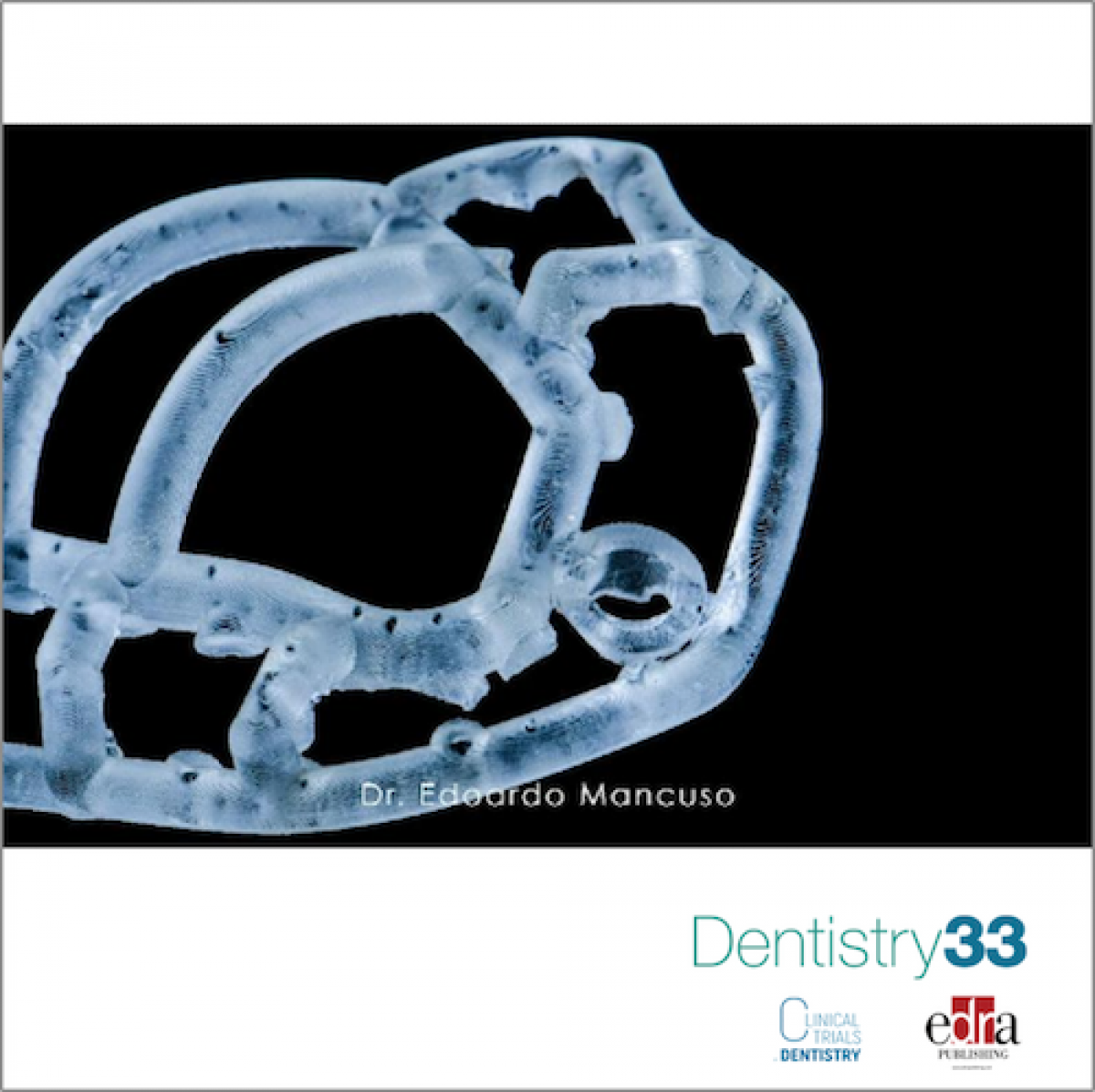
Computer guided versus freehand dental implant placement surgery
Edoardo Mancuso
Over the last years, the trio of modern implantology development, imaging techniques, and the digital revolution have combined to spawn the growth in the use of guided implantology. The so-called computer-guided surgery allows a high level of accuracy in dental implant placement, providing good postoperative comfort for the patient. The surgical guide templates are produced using CAD/ CAM to guide the entire drilling process and dental implant placement. Recent systematic reviews have reported that the main advantages of fully guided surgery are the accuracy of the implant position, with the possibility of a flapless surgery, a shorter chair time, reduced postoperative discomfort, pain, and swelling, and the placement of interim prostheses in immediate loading protocols with fewer adjustments. However, even with technological advances, the conventional non-guided protocol, is still widely used owing to the lower cost of treatment and better depth visual control when manually inserting the implant.
Nevertheless, there is still no consensus on the difference between computer-guided surgery and freehand surgery regarding marginal bone loss (MBL), complications (mechanical and biological), and implant survival rate.
To address this problem, Dr. Yogui and his team have written a systematic review published in the International Journal of Oral Maxillofacial Surgery. The study aimed to evaluate two surgical protocols, computer-guided (fully guided) and freehand (non-guided) surgeries, for implant placement.
Material and Methods
In the review, the intervention group included patients rehabilitated with dental implants using computer-guided surgery, and the comparison group included patients rehabilitated with dental implants using freehand surgery.
The eligible studies included randomised controlled trials (RCTs) and prospective studies with at least 10 patients that compared the two surgical techniques.
Results
The authors retrieved in the database search 1508 references. After the removal of duplicate references, 872 studies remained. After a detailed review of the titles and abstracts of the articles, 29 were eligible for full-text reading. Finally, four RCT studies were included by the researchers in the qualitative and quantitative analyses.
These studies involved a total of 154 patients with 597 dental implants and a mean follow-up period of 2.25 years. It is reported that there was no difference between computer-guided surgery and freehand surgery in terms of the marginal bone loss (mean difference -0.11 mm, 95% confidence interval (CI) -0.27 to 0.04 mm; P = 0.16), mechanical complications (risk ratio (RR) 0.85, 95% CI 0.36–2.04; P = 0.72), biological complications (RR 1.56, 95% CI 0.42–5.74; P = 0.51), and implant survival rate (RR 0.53, 95% CI 0.11–2.43; P = 0.41).
Discussion
In the discussion section, the authors state that despite the lack of difference between the two techniques in the outcomes evaluated in this review, the use of computer-guided surgery presents a major advantage related to the accuracy of the implant placement position when compared to freehand or half-guided surgery. They continue, assessing that it also allows a more predictable interim restoration over dental implants and less time for the adaptation of temporary crowns in immediate loading protocols. However, it is suggested in the review, that the use of computer-guided surgery has the disadvantage of additional costs when compared to the freehand technique.
Furthermore, the article meta-analysis showed high heterogeneity, and the author says that this could be related to numerous factors, such as the low number of studies, use of different implant-abutment connections, and different types of prostheses evaluated, among others.
Conclusion
The article concludes by stating that both guided and freehand surgeries yield similar results in terms of MBL, complications, and implant survival rates. However, due to the limitations of the study, more studies should be performed to improve the understanding of this subject.
For additional information: Comparison between computer-guided and freehand dental implant placement surgery: A systematic review and meta-analysis
 Read more
Read more
Much like EMTs rushing to the scene after an accident, stem cells hurry to the site of a skull fracture to start mending the damage. A new finding has uncovered the signaling mechanism that triggers...
Products 05 November 2025
SimplyTest has launched a groundbreaking saliva-based test to detect high-risk strains of oral human papillomavirus (HPV), a major cause of oropharyngeal cancers.
News 05 November 2025
Perimetrics, Inc., a dental technology company pioneering quantitative diagnostics, announced today that the U.S. Food and Drug Administration (FDA) has granted clearance for the InnerView...
News 05 November 2025
On October 15, open enrollment for Medicare began nationwide. Hundreds of thousands of seniors in New Jersey will once again face the challenge of finding the right Medicare coverage, including the...
Digital Dentistry 04 November 2025
Digitalisation is an expanding field in dentistry and implementation of digital teaching methods in dental education is an essential part of modern education.










